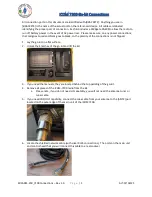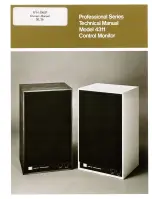
CC1000
SWRS048A Page 37 of 55
26. System Considerations and Guidelines
26.1 SRD regulations
International regulations and national laws
regulate the use of radio receivers and
transmitters. SRDs (Short Range Devices)
for licence free operation are allowed to
operate in the 433 and 868-870 MHz
bands in most European countries. In the
United States such devices operate in the
260–470 and 902-928 MHz bands.
CC1000
is designed to meet the requirements for
operation in all these bands. A summary
of the most important aspects of these
regulations can be found in Application
Note
AN001 SRD regulations for licence
free transceiver operation
, available from
Chipcon’s web site.
26.2 Low cost systems
In systems where low cost is of great
importance the
CC1000
is the ideal choice.
Very few external components keep the
total cost at a minimum. The oscillator
crystal can then be a low cost crystal with
50 ppm frequency tolerance.
26.3 Battery operated systems
In low power applications the power down
mode should be used when not being
active. Depending on the start-up time
requirement, the oscillator core can be
powered during power down. See page 28
for information on how effective power
management can be implemented.
26.4 Crystal drift compensation
A unique feature in
CC1000
is the very fine
frequency resolution of 250 Hz. This can
be used to do the temperature
compensation of the crystal if the
temperature drift curve is known and a
temperature sensor is included in the
system. Even initial adjustment can be
done using the frequency programmability.
This eliminates the need for an expensive
TCXO and trimming in some applications.
In less demanding applications a crystal
with low temperature drift and low ageing
could be used without further
compensation. A trimmer capacitor in the
crystal oscillator circuit (in parallel with
C171) could be used to set the initial
frequency accurately. The fine frequency
step programming cannot be used in RX
mode if optimised frequency settings are
required (see page 24).
26.5 High reliability systems
Using a SAW filter as a preselector will
improve the communication reliability in
harsh environments by reducing the
probability of blocking. The receiver
sensitivity and the output power will be
reduced due to the filter insertion loss. By
inserting the filter in the RX path only,
together with an external RX/TX switch,
only the receiver sensitivity is reduced,
and output power is remained. The
CHP_OUT (LOCK) pin can be configured
to control an external LNA, RX/TX switch
or power amplifier. This is controlled by
LOCK_SELECT
in the
LOCK
register.
26.6 Frequency hopping spread
spectrum systems
Due to the very fast frequency shift
properties of the PLL, the
CC1000
is also
suitable for frequency hopping systems.
Hop rates of 1-100 hops/s are usually
used depending on the bit rate and the
amount of data to be sent during each
transmission. The two frequency registers
(
FREQ_A
and
FREQ_B
) are designed
such that the ‘next’ frequency can be
programmed while the ‘present’ frequency
is used. The switching between the two
frequencies is done through the
MAIN
register.















































